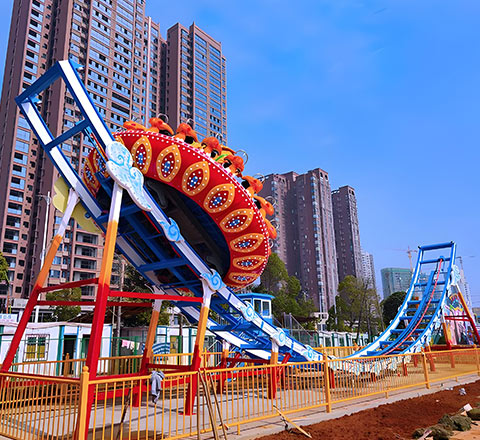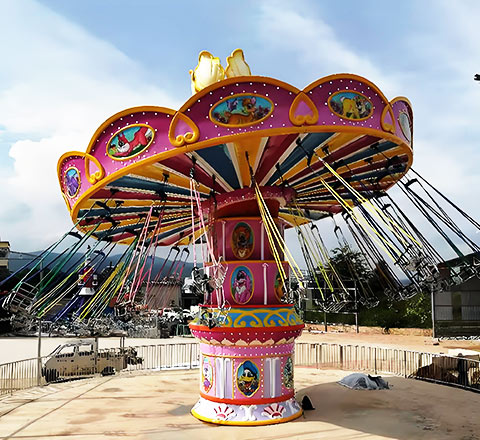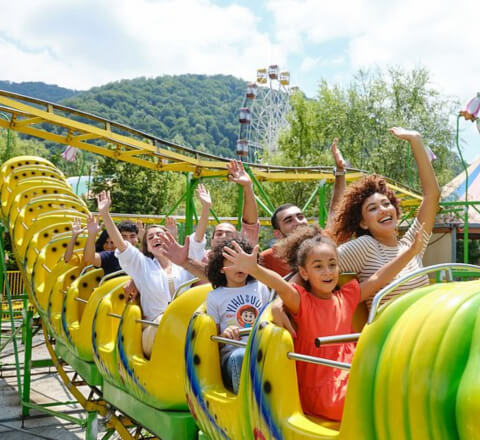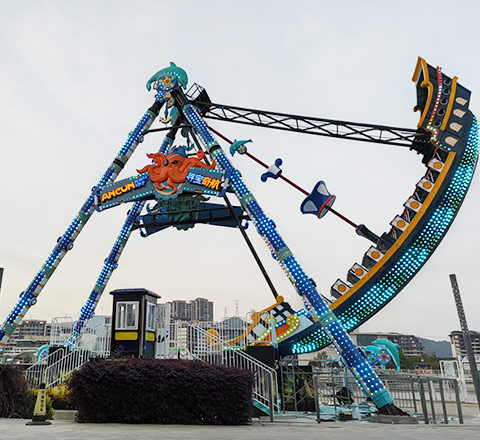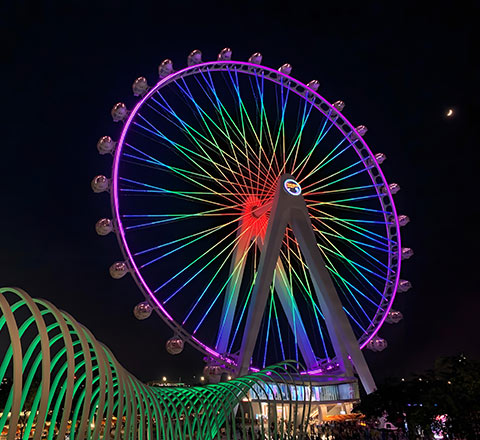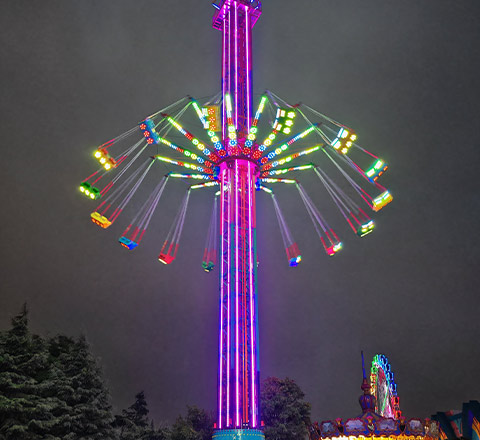The Ferris wheel, as one of the most thrilling amusement park rides, is beloved by visitors worldwide and has become a landmark in many cities, offering an unparalleled entertainment experience.. While it may appear simple at first glance, the inner workings of a Ferris wheel are much more intricate. Understanding the Ferris wheel components and their functions is key to appreciating how this iconic ride operates smoothly and safely. (If you’re interested in exploring other popular amusement rides, be sure to check out our Types of Amusement Rides You Need to Know guide.)
In this guide, we’ll explore what the components of a Ferris wheel are and discuss how they all come together to deliver a safe and enjoyable ride experience. Whether you are a Ferris wheel manufacturer, operator, or simply curious about how these fascinating structures work, this article will provide you with valuable insights.
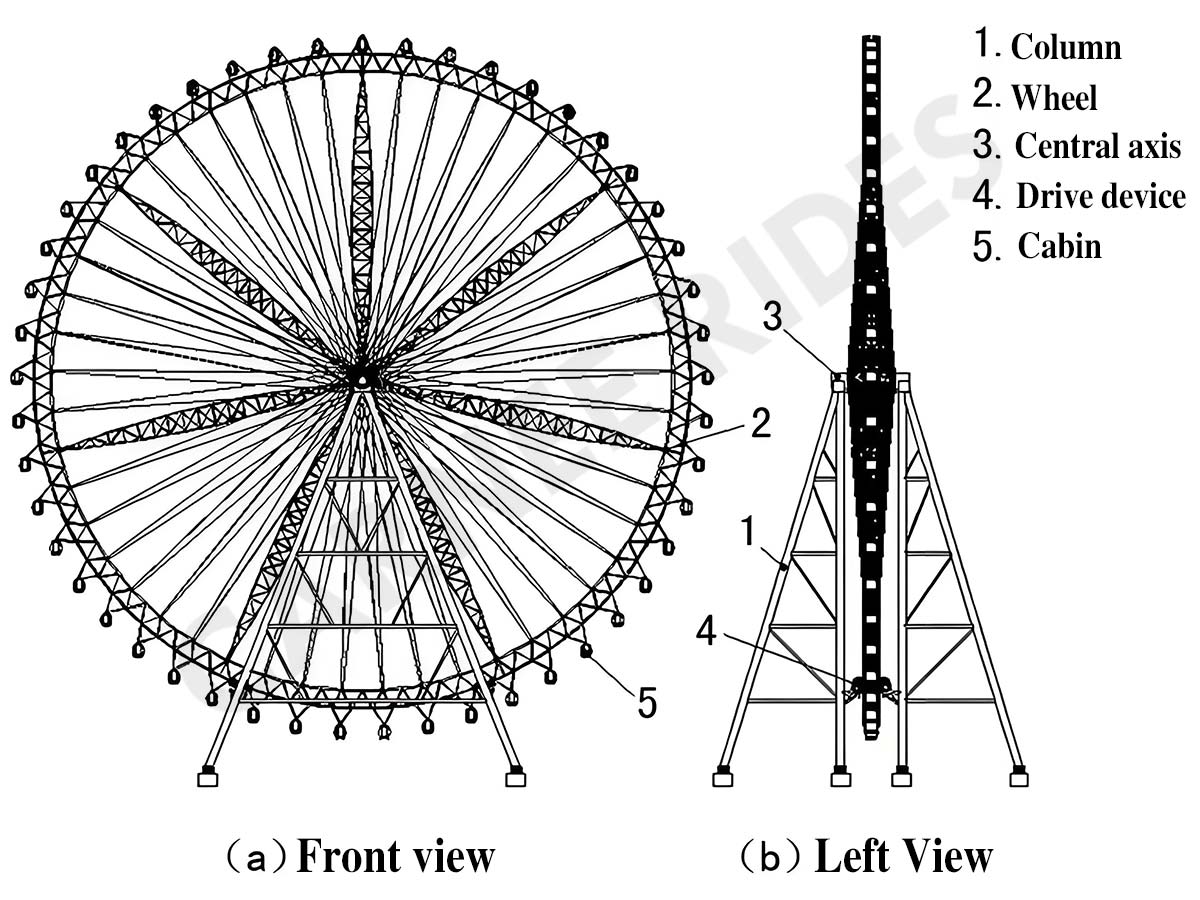
Ferris Wheel Main Components
These are the core parts of a Ferris wheel that give it its shape, support, and ability to operate safely.
1. Wheel Frame
- Purpose: The large circular frame is the backbone of the Ferris wheel.
- Material: Typically made from steel, ensuring strength and stability.
- Function: Supports the gondolas (passenger cabins) and is connected to the axle, allowing for smooth rotation.
2. Ferris Wheel Cabin
- Design: The gondolas can be open or enclosed, offering a variety of experiences for riders.
- Safety Features: Equipped with safety bars and restraints to keep passengers secure.
- Material: Common materials used include fiberglass and aluminum alloy for durability and lightness.
- Customization: For high-end needs, we offer VIP custom cabins that allow passengers to enjoy a premium experience. Learn more about our Ferris wheel cabin customization options.
3. Hub and Axle
- Purpose: The hub is located at the center of the wheel and connects to the axle.
- Function: The axle ensures the Ferris wheel rotates smoothly, transferring power from the drive system.
4. Support Towers
- Purpose: The tall vertical towers hold the wheel and axle, providing balance and stability.
- Material: Typically made from steel, capable of bearing the weight and stress exerted by the wheel.
5. Foundation
- Purpose: The foundation anchors the Ferris wheel to the ground, ensuring its stability.
- Material: Usually made of reinforced concrete, providing a solid base for the entire structure.

Drive and Control Systems
These components are essential for powering the Ferris wheel and ensuring smooth operation.
6. Drive System
- Purpose: The drive system provides the power needed for the Ferris wheel to rotate.
- How It Works: Powered by electric motors or hydraulic systems, the system controls the speed and direction of the wheel’s rotation.
7. Braking System
- Purpose: The braking system is designed to stop or slow the wheel as necessary.
- Safety Design: Includes emergency brakes to ensure the wheel can stop safely in the event of a failure.
8. Bearings
- Purpose: Bearings reduce friction, especially around the axle, allowing for smooth and efficient rotation.
- Maintenance: Regular maintenance is crucial to prevent wear and ensure smooth performance.
9. Control System
- Purpose: The control system monitors and manages the Ferris wheel’s movement, speed, and safety features.
- Function: It includes sensors, emergency stop buttons, and cameras to ensure safe operation.
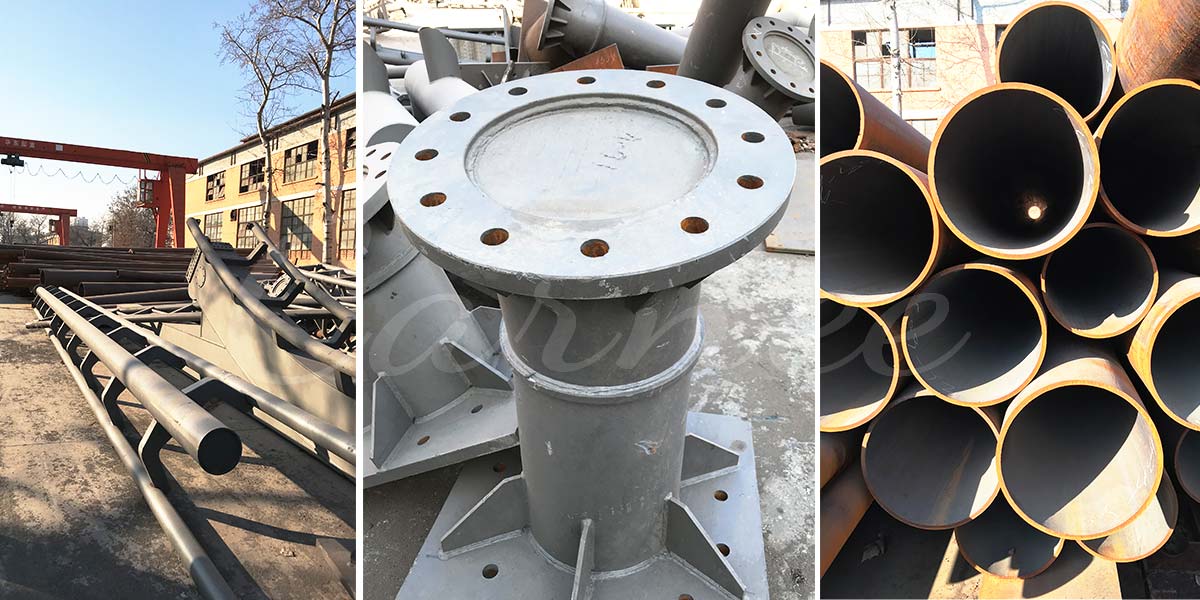
Enhancing the Experience and Safety
Though not part of the core mechanics, these additional features elevate the ride experience and enhance safety.
10. Ferris Wheel Lighting System
- Purpose: The lighting system makes the Ferris wheel wheel visible and enhances its aesthetic appeal, especially at night.
- Design: Many Ferris wheels feature LED lights or dynamic lighting effects to create visually stunning effects during evening rides.
11. Safety Barriers
- Purpose: Safety barriers prevent unauthorised access to moving parts and ensure that riders are safe when boarding and disembarking.
- Importance: These are essential safety features that maintain the integrity of the ride.
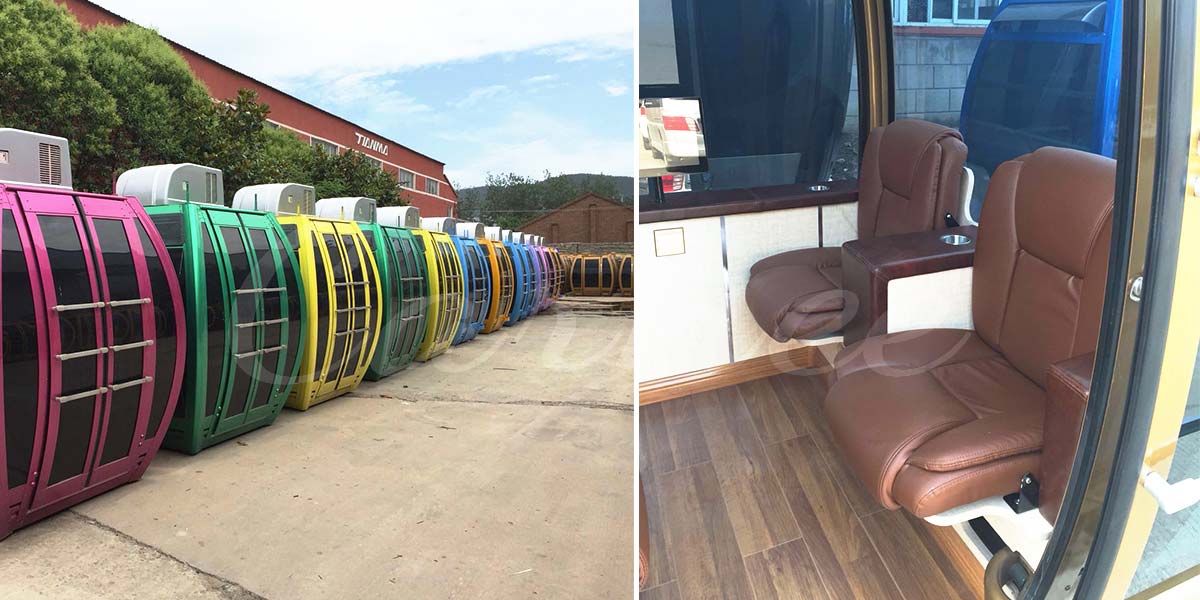
Why It’s Important to Understand Ferris Wheel Components
Understanding the individual Ferris wheel parts helps operators and manufacturers maintain, troubleshoot, and optimize the ride. It also enables them to make informed decisions when purchasing or designing a Ferris wheel. (Learn more about ferris wheel price: How Much Does a Ferris Wheel Cost?)
Every component, from the drive system to the gondolas, plays an essential role in ensuring the smooth and safe operation of the Ferris wheel. By understanding which parts require more frequent maintenance (like bearings and brake systems), you can reduce downtime and extend the operational lifespan of the ride.
Ferris Wheel Maintenance
Regular maintenance is critical for ensuring the safety and smooth operation of a Ferris wheel. Below are common maintenance tasks for a Ferris wheel:
| Maintenance Task | Frequency | Description |
| Visual Inspection | Daily | Check for visible wear or damage to components. |
| Lubrication | Weekly | Apply lubrication to moving parts to ensure smooth operation. |
| Structural Integrity Check | Monthly | Inspect the frame and support towers for signs of stress or fatigue. |
| Electrical System Check | Quarterly | Inspect wiring and connections for safety and functionality. |
| Annual Overhaul | Annually | Perform a full disassembly and thorough inspection of all major components. |
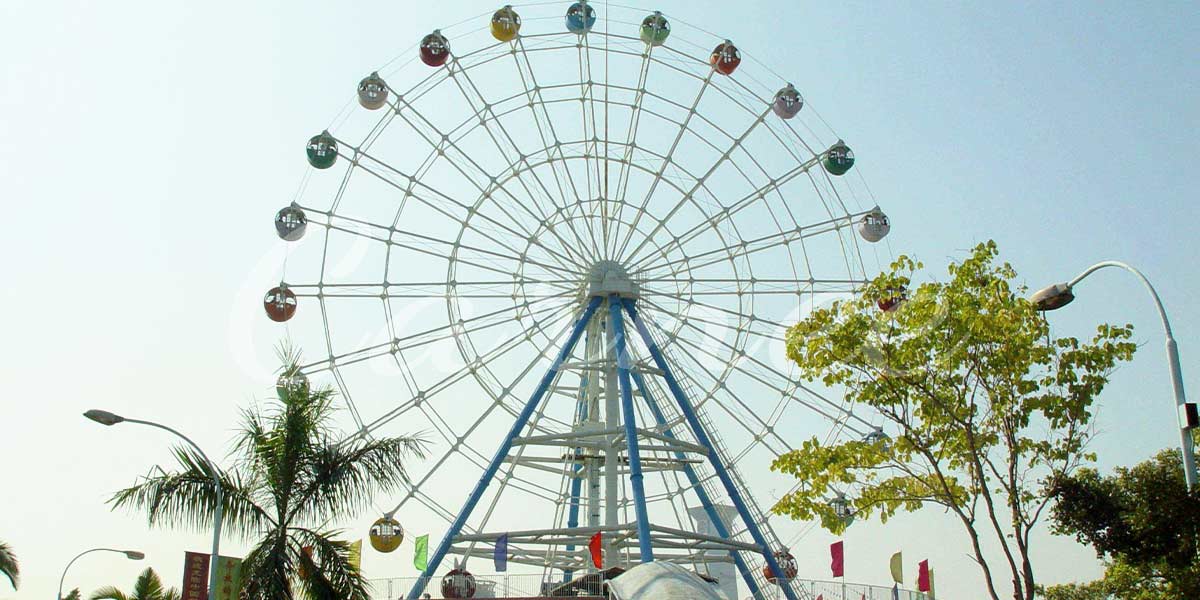
The Future of Ferris Wheel Design
As technology advances, Fairground Ferris wheel designs continue to evolve with new materials, designs, and safety features being developed to improve the ride experience and durability. Modern Ferris wheels are often equipped with dynamic lighting, transparent gondolas, and advanced control systems that not only enhance the thrill but also make these wheels iconic landmarks in city skylines. Many large amusement equipment companies offer customizable Ferris wheel solutions, allowing you to tailor the appearance, cabins, lighting, height, and more for a personalised experience.
Conclusion: The Heart of Ferris Wheel Engineering
Understanding the components of a Ferris wheel is crucial for anyone involved in the operation, design, or maintenance of these iconic amusement park rides. By appreciating how each part works together, you gain a deeper respect for the engineering behind these monumental structures and help ensure they continue to provide safe and unforgettable experiences for generations to come.
You may also like: Ferris Wheel FAQ: 20 Common Questions Answered

